Order: Passeriformes
Family: Certhiidae
Genus: Certhia
Species: Certhia americana
Introduction
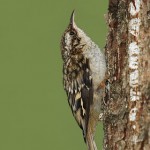
By Alan Vernon (Flickr: Brown creeper (Certhia americana)) [CC-BY-2.0], via Wikimedia Commons
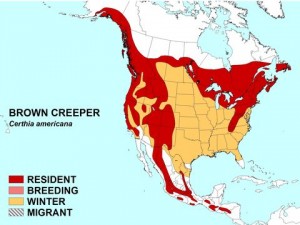
In Washington State, brown creepers are common in all but young forests throughout western Washington. East of the Cascade range, distribution is restricted to the northeast corner of Washington and the Blue Mtns. of southeastern Washington (Seattle Audubon Society 2014). Elevational distribution is to the alpine zone in warmer months with resident birds migrating to lower elevations during winter months. (Poulin et al. 2013).
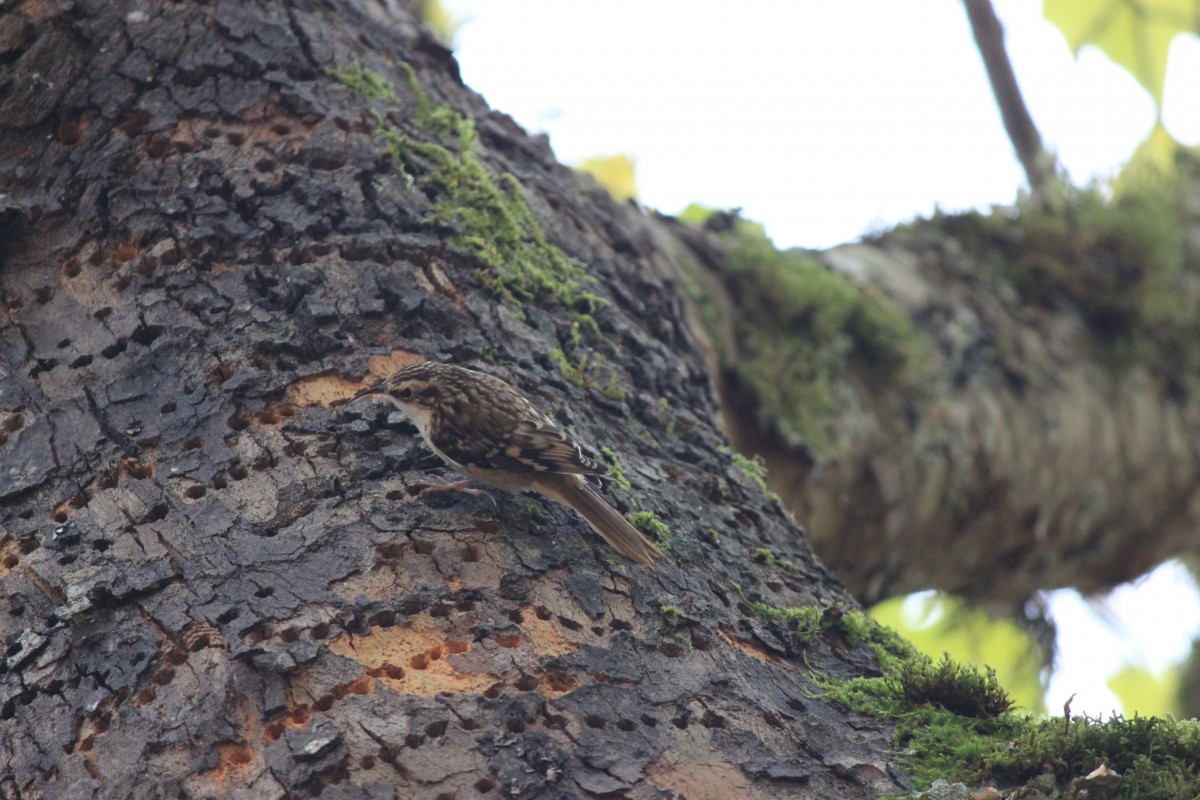 By Melisa Pinnow 2014
By Melisa Pinnow 2014
The brown creepers diet is primarily comprised of insects and larvae, pupae, and insect eggs that they glean from the crevices of bark (Franzreb 1985). During the winter months when insects are scarce, they will expand their diet to include seeds and other vegetation (Poulin et al. 2013). It has been noted that the brown creeper prefers to forage larger trees. This most likely occurs for several reasons; there is a larger area to cover while foraging, it would conserve energy to not have to fly to different trees as often, and general higher concentrations of prey in the crevice rich bark of an older tree (Franzreb 1985).
Call:
Recorded by Will Uriu 11/19/14 in the woods of The Evergreen State Colleges
Call:
Recorded by Will Uriu 12/3/14 on The Evergreen State College
Campus.
Call:
Recorded by Will Uriu 12/7/14 in the woods of The Evergreen State College
Populations throughout their North American range currently appear to be stable and of least concern (North American Breeding Bird Survey; IUCN 2012). Declines tend to be isolated to local populations due to habitat destruction and reduction (Poulin et al. 2013).
Conservation issues include intentional insect removal on managed lands reducing food availability (D’astous and Villard 2011), habitat fragmentation and increased edge effects from logging, urban development (Brand and George 2001), and habitat modification for the conservation of other species such as those in the Turdidae family (Poulin et al. 2008). The brown creeper is an indicator species for old growth forest habitat (Poulin et al. 2011). Logging practices where > 55 percent of the trees are retained can mitigate the short term effects of logging on brown creepers in irregularly structured mature forests (Le Blanc et al. 2010). However, D’Astous and Villard (2012) found that in northern hardwood forests, food provisioning rates tended to decrease in treated plots where the foraging substrates were less dense. With the high energetic costs of breeding, this could have long term impacts on adult and nestling survivorship.
In Washington State, breeding populations appear to be stable and don’t seem to have significantly changed in the last 20 years (North American Breeding Bird Survey). Winter populations however, appear to be increasing. One possible explanation could be that more individuals from northern populations are wintering in Washington and higher, elevational summer residents are moving lower in winter. Winter bird feeders may also contribute to the positive winter population trend by increasing winter survivorship.
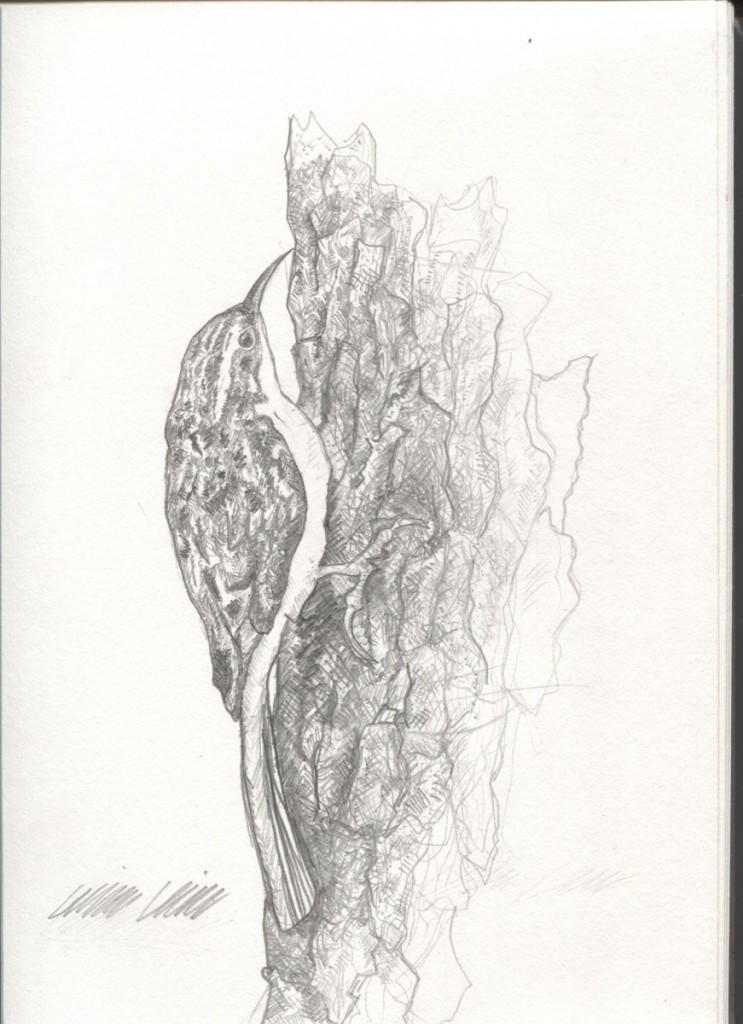 Field sketch by Will Uriu December 2014
Field sketch by Will Uriu December 2014
Evergreen Woods 11/12/14: 11:59AM- 12:26PM
Cloud Cover:0%
Precipitation: 0
Temperature: 43°F
Wind: 4mph
47.076745, -122.978734
Brown creeper spotted on the edge of a mostly deciduous wooded area and small field of the Evergreen woods with good sunlight. It was amongst a mixed flock composed of both golden-crowned and ruby-crowned kinglets.It was seen climbing vertically up small red cedars, slowly spiraling around the trunk probing amongst the bark. The flock dispersed from the location and I lost track of the Brown creeper as this occurred.
Evergreen Woods 11/15/14: 3:49PM-4:04PM
Cloud Cover:20%
Precipitation: 0
Temperature: 45°F
Wind: 3mph
47.076169, -122.974987
Found amongst mixed flock of kinglets and chickadees on the edge of a sunny and mostly deciduous wooded area and a road of the Evergreen woods. Mostly foraging on smaller red cedars but kept going to one very large Douglas fir.The flock dispersed when a large loud group of people walked by.
Evergreen Campus 11/19/14: 10:58AM- 11:41AM
Cloud Cover:100%
Precipitation: 0.02
Temperature: 48°F
Wind: 1mph
47.071745, -122.979286
Brown creeper was found at the entrance to the organic farm path amongst a flock of golden crowned kinglets, on the edge of a shady and mostly coniferous wooded area. It was observed probing the moss at the base of branches as well as the bark on several different Douglas firs, one red cedar, and one big leaf maple. On several occasions the creeper climbed to great heights within the Douglas-fir and I lost track of it on several occasions. At one point the Brown creeper was observed landing only a few feet from the ground on one of the Douglas-firs. It was also observed on several occasions climbing out on branches, hanging upside down and foraging amongst mosses and lichens. It rarely went past the halfway point of the branch and would often fly back to the trunk of the tree.
Nisqually Wildlife Reserve 11/20/14
Cloud Cover: 100%
Precipitation: 0.01
Temperature: 41°F
Wind: 6mph
10:18AM-11:02AM
47.073584, -122.708522
Heard before seen in a riparian deciduous forest made up of mostly cottonwoods. Found amongst a mixed flock of golden crowned kinglets and both black-capped chickadees and chestnut backed chickadees. Seen briefly climbing and flying between three big leaf maples and foraging amongst moss. Lost site of the brown creeper for an extended period of time but could still hear it calling. Seen again on a small red cedar probing amongst more moss. After a few minutes it flew away.
12:53PM-1:15PM
47.077314, -122.709797
Encountered two brown creepers at once climbing a large cottonwood tree amongst a large mixed flock composed mostly of chickadees. When the brown creeper at a lower height noticed the one climbing higher, it chased it around the tree and off onto a smaller cottonwood in very close proximity. This cottonwood was dense in branches covered in lichen which is where the creeper primarily foraged.
Evergreen Woods 12/3/14: 12:43PM- 2:20PM:
Cloud Cover:90%
Precipitation: 0
Temperature: 41°F
Wind: 3mph
At least two brown creepers were observed during a walk through the Evergreen woods in a mostly coniferous area comprised mainly of Douglas-fir. I heard the trill call of a brown creeper amongst a mixed flock of kinglets and chickadees and played a brown creeper call to see if I could get a reaction. Two brown creepers flew to two large Douglas-firs within a close proximity of where I stood. They continued to climb and probe amongst the bark and moss unbothered. One climbed upside down on a branch probing amongst lichen. Eventually one flew from its original tree to the tree the other brown creeper was climbing. I noticed that once the one at a lower elevation noticed the one climbing higher, it flew up and chased the other one in a spiral motion away from the tree.
12/4/14: 12:37PM-12:57PM
Cloud Cover:80%
Precipitation: 0.03
Temperature: 44°F
Wind: 1mph
47.072427, -122.976711
I observed two Brown creepers in a small patch of Douglas-firs in the middle of campus of The Evergreen State College. This was the first time witnessing any Brown creepers not grouping in with a mixed flock. Both were quite vocal during the brief time watching them; letting out short trill calls as they foraged amongst the trees. One of the creepers remained on the largest of the Douglas-firs until climbing high up and out of view. The other flew between three smaller Douglas-firs occasionally rapidly probing amongst the bark.
3:07PM-3:40PM
47.072077, -122.978399
While walking by another small patch of campus I noticed a mixed flock of kinglets and chickadees flying amongst the branches. I decided to stop and see if any Brown creepers were amongst them. Within a few minutes I heard the distinct call of a creeper. Shortly after, I saw it climbing the trunk of the largest Douglas-fir amongst the patch of trees.
Evergreen woods 12/6/14: 3:23PM-4:27PM
Cloud Cover:100%
Precipitation: 0.12
Temperature: 47°F
Wind: 13mph
During a walk around the edge of the Evergreen woods, I encountered a mixed flock comprised mainly of golden crowned kinglets on Driftwood Rd. NW. I decided to stop and see if I could find any brown creepers amongst them. First I heard the distinct call and then I saw one climbing up the side of a red cedar. It quickly spiraled around the trunk and out of site. Shortly after I saw it fly down onto a big leaf maple about five feet from the ground. It foraged through some thick moss growing on the tree. The flock slowly moved a brief distance down the road. I left as it was quickly growing dark outside.
Evergreen Campus 12/7/14: 2:12PM-4:04PM
Cloud Cover:40%
Precipitation: 0
Temperature: 49°F
Wind: 3mph
I decided to walk around campus and see if I could find any brown creepers in more open areas such as a single tree on red square. After having little luck I heard a brown creeper as I was walking by the dorms. I quickly spotted it on a Douglas-fir in a small patch of mixed trees. Close by were several kinglets high up in the tree and a hairy woodpecker. The brown creeper remained in this area for a long period of time sticking mainly to the large Douglas-firs within the patch.
References
Adams, E.M. & Morrison, M.L. (1993). Effects of forest stand structure and composition on red-breasted nuthatches and brown creepers. Journal of Wildlife Management, 57(3), 616-629
Brand, L., & George, T. (2001). Response Of Passerine Birds To Forest Edge In Coast Redwood Forst Fragments. The Auk, 118(3), 678-686.
Collins, K. 2014. Personal Observation.
Collins, K. 2014. Personal Photo: Brown Creeper, Featured Image.
Cornell Lab of Ornithology. Brown Creeper. All About Birds. Retrieved January 26, 2014. http://www.allaboutbirds.org/guide/brown_creeper/lifehistory
D’astous, E., & Villard, M. (2012). Effects of selection harvesting on bark invertebrates and nest provisioning rate in an old forest specialist, the brown creeper (Certhia americana) (J.P. Savard, Editor). Ecoscience, 19(2), 106-112.
Ficken, M. (2000). Call Similarities among Mixed Species Flock Associates. The Southwestern Naturalist, 45(2), 154-158.
Franzreb, K.E. (1985). Foraging ecology of brown creepers in a mixed coniferous forest. Journal of Field Ornithology, 56(1), 9-16.
IUCN 2012. IUCN Red List of Threatened Species: Certhia americana.
Version 2012.2. <www.iucnredlist.org>.
Le Blanc, M.L, Fortin, D., Darveau,M., and J.C. Ruel. (2010). Short term response of small mammals and forest birds to silvicultural practices differing in tree retention in irregular boreal forests (J.S. Miller, Editor). Ecoscience 17(3): 334-342.
Lima, S. L., & Lee, R. M. (1993). Food Caching and Its Possible Origin in the Brown Creeper. The Condor, 95(2), 483-484.
Olson, C. R., Hannah, K. C., & Gray, C. (2009). First Confirmed Record of Breeding Brown Creepers in the Northwest Territories, Canada. Northwestern Naturalist, 90(2), 156-159.
Poulin, J.F., D’astous, E.,Villar, M., Hejl, S. J., K. R. Newlon, M. E. McFadzen, J. S. Young, and C. K. Ghalambor. (2013). Brown Creeper (Certhia americana). The Birds of North America Online, (A. Poole, Editor). Ithaca: Cornell Lab of Ornithology; Retrieved from the Birds of North America Online: http://bna.birds.cornell.edu.bay.evergreen.edu/bna/species/669
Poulin, J., & Villard, M. (2011). Edge effect and matrix influence on the nest survival of an old forest specialist, the Brown Creeper ( Certhia americana). Landscape Ecology, 26(7), 911-922.
Poulin, J., Villard, M., Edman, M., Goulet, P. J., & Eriksson, A. (2008). Thresholds in nesting habitat requirements of an old forest specialist, the Brown Creeper (Certhia americana), as conservation targets. Biological Conservation, 141(4), 1129-1137.
Rhodes, S. 2012. Personal Observation.
Seattle Audubon Society. (2014). Bird Web:Brown Creeper, Washington State Distribution. http://www.birdweb.org/BIRDWEB/bird/brown_creeper#.
Sibley, D. (2003). The Sibley Field Guide To Birds of Western North America (1st ed., p. 326). New York, NY: Alfred A. Knopf Inc.
Sibley, D. (2001). Creepers. In The Sibley Guide to Bird Life & Behavior (1st ed., pp. 438-439). New York, NY: Alfred A. Knopf Inc.
U.S. Fish and Wildlife Service. (2013). Migratory Bird Program: Migratory Bird Treaty Act. http://www.fws.gov/migratorybirds/RegulationsPolicies/mbta/mbtintro.html
USGS (2014). Brown Creeper: North American Breeding Bird Survey.
https://www.pwrc.usgs.gov/bbs/index.cfm?CFID=1441151&CFTOKEN=33e93e233044892e-F0CE8B7B-B6F0-8784-2BDC63F844EB06EA
Weikel, J. M., & Hayes, J. P. (1999). The Foraging Ecology of Cavity-Nesting Birds in Young Forests of the Northern Coast Range of Oregon. The Condor, 101(1), 58-66.
Revised and edited by Kellene Collins 2014.
Revised and edited by Will Uriu 2014

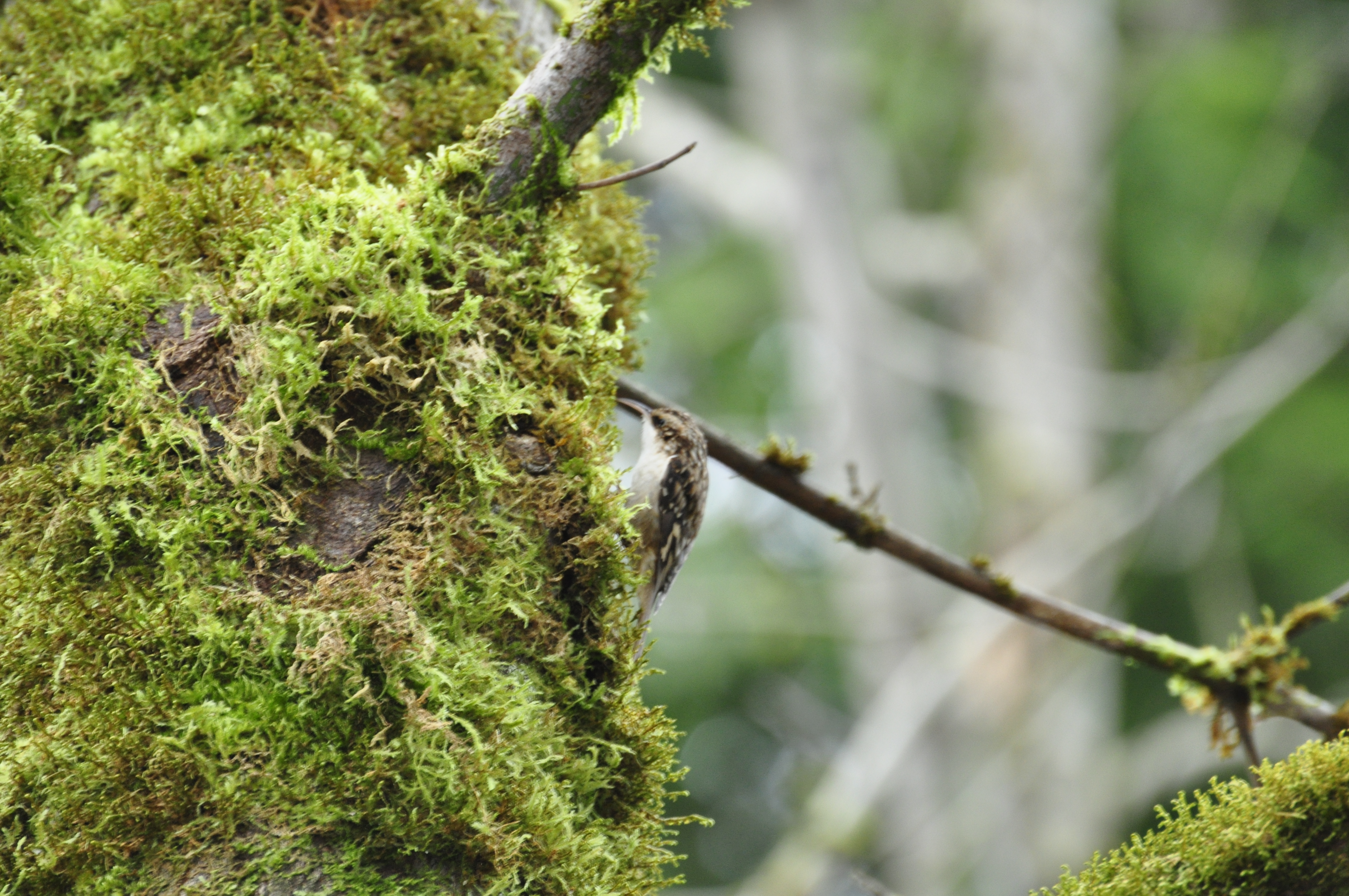
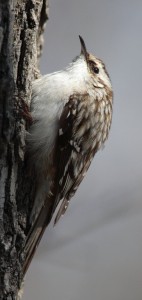
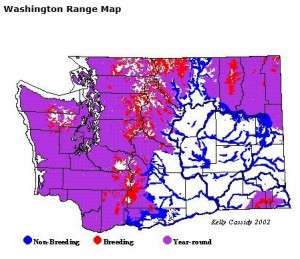
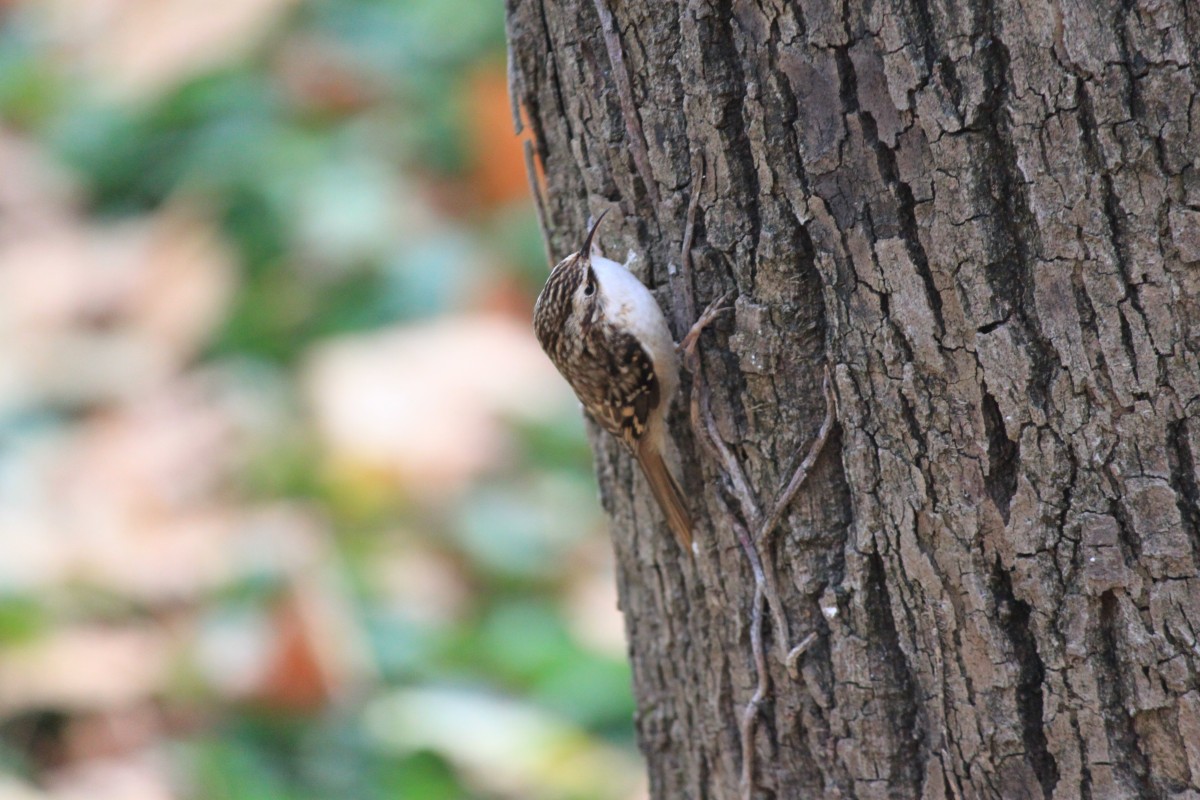


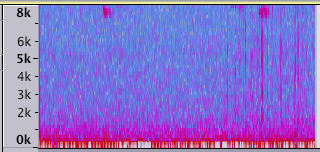
Leave a Reply